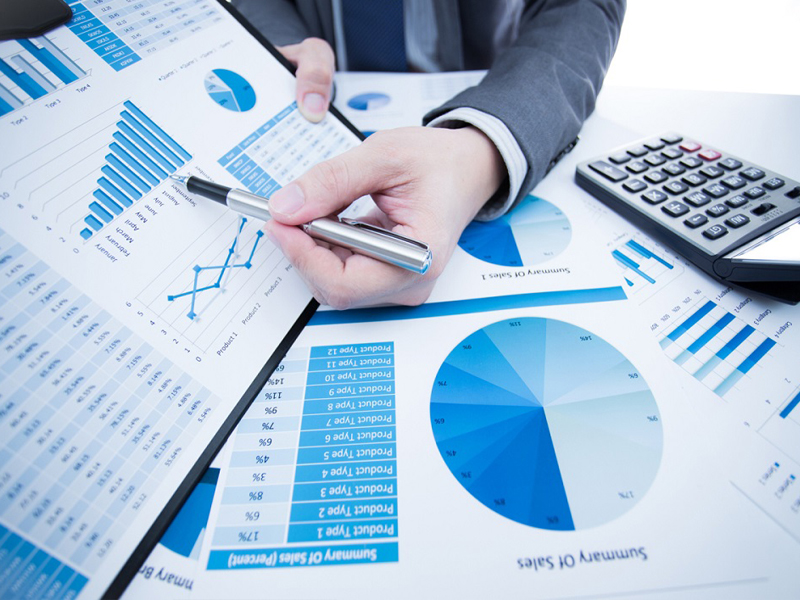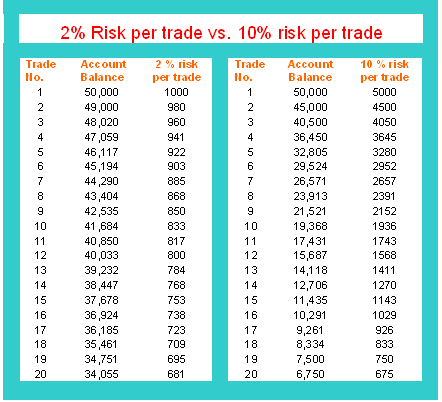

Book value is the cost of the asset minus the depreciation every year. Tangible assets are physical assets that can be touched –think of plant, land, machinery, your laptop, building, or office stationery. Calculate the accumulated depreciation and net book value of the equipment at the end of the third year.
Depreciation for the company is calculated using the straight-line method, which is $90,000 per year for the next 10 years until the value of the machinery becomes $1,00,000. Each year the accumulated depreciation account will increase by $90,000 per year. Therefore, for example, at the end of 5 years, annual depreciation is $90,000 but the cumulative depreciation is 4,50,0000. Accumulated depreciation is a crucial part of a company’s balance sheet. The balance sheet includes three headings, namely assets, liabilities, and equity. However, accumulated depreciation does not fall under any of these categories.
- It can be looked at on its own and in conjunction with other statements like the income statement and cash flow statement to get a full picture of a company’s health.
- Also, at the end of the asset’s useful life, the carrying value on the balance sheet matches the salvage value.
- In other words, it gives a report showing an equal amount of depreciation expense annually throughout its entire lifespan of use until the entire asset is depreciated to its scrap value.
- The number of Years refers to the period the company has used the product.
The annual depreciation expense is often added back to earnings before interest and taxes to calculate earnings before interest, taxes, depreciation, and amortization as it is a large non-cash expense. Accumulated depreciation can be useful to calculate the age of a company’s asset base, but it is not often disclosed clearly on the financial statements. Many companies rely on capital assets such as buildings, vehicles, equipment, and machinery as part of their operations. In accordance with accounting rules, companies must depreciate these assets over their useful lives.
Accounting Adjustments/Changes in Estimate
Accumulated depreciation is an effective way for businesses to assess the true values of profits and overall performance over time. Deskera can also help with your inventory management, customer relationship management, HR, attendance and payroll management software. Deskera can help you generate payroll and payslips in minutes with Deskera People.

To help calculate your figures, use ourdepreciation calculator, enter a few simple details, and it will calculate your depreciation. As the business expects the value to reduce greatly in the early years, they use 50% depreciation over 4 years. There are different ways to depreciate an asset which we will look at later. Deskera BooksDeskera PeopleWith Deksera CRM you can manage contact and deal management, sales pipelines, email campaigns, customer support, etc. You can generate leads for your business by creating email campaigns and view performance with detailed analytics on open rates and click-through rates .
How to Calculate the Amount of Depreciation for a Period
The income statement measures the company’s financial performance over a period. The depreciation expense is shown on the income statement as an expense. The income statement or Profit and Loss is the other most important financial statement a company produces.
This is because doing so charges more of an asset’s cost to expense during its earlier years of usage. When recording depreciation in the general ledger, a company debits depreciation expense and credits accumulated depreciation. Depreciation expense flows through to the income statement in the period it is recorded.
When a company is first formed, shareholders will typically put in cash. Cash rises by $10M, and Share Capital rises by $10M, balancing out the balance sheet. Enter your name and email in the form below and download the free template now! You can use the Excel file to enter the numbers for any company and gain a deeper understanding of how balance sheets work. ClearTax offers taxation & financial solutions to individuals, businesses, organizations & chartered accountants in India. ClearTax serves 1.5+ Million happy customers, 20000+ CAs & tax experts & 10000+ businesses across India.
The total of the depreciated cost and the accumulated depreciation will give the original cost of the equipment and the book value of the asset will be the difference between the two accounts. Therefore, on the balance sheet, the value of an asset is expressed as the cost of the asset minus accumulated depreciation which equals the book value of that asset. The declining balance or fixed-percentage-of-declining-balance depreciation method is the most widely used accelerated depreciation method. In most accounting methods, assets are recorded at the original cost in the balance sheet. However, the accumulated depreciation allows assets to deduct the deterioration from the original cost.
Overall, the journal entries for accumulated depreciation are as below. Suppose we have to select the classification of accumulated depreciation as an asset or liability. In that case, we will choose it to represent an asset as if we represent it as a liability.
Liquidity – Comparing a company’s current assets to its current liabilities provides a picture of liquidity. Current assets should be greater than current liabilities, so the company can cover its short-term obligations. The Current Ratio and Quick Ratio are examples of liquidity financial metrics.
This means that accumulated depreciation is the total amount of an asset’s cost that has been allocated as depreciation expense from the time that the asset has been put into use. That is, the amount of accumulated depreciation for an asset or group of assets will definitely increase over time as depreciation expenses continue to be recorded. Therefore, depreciation expense appears as an expense on the income statement while accumulated depreciation is a contra asset reported on the balance sheet. On the balance sheet, the accumulated depreciation account is recorded as a contra asset account and thereby represents a credit balance. It is reported on the balance sheet under the asset section and reduces the total value of assets recognized on the financial statement.
Deskera has the transaction data consolidate into each ledger account. Their values will automatically flow to respective financial reports. Accumulated depreciation works by recording the amount of depreciation that has been charged to an asset over its life. Each time depreciation is charged, the accumulated depreciation account is increased, and the asset’s net book value is reduced.
Many businesses used accelerated methods instead of straight-line methods for depreciation calculation. In the accelerated method, the early years of an asset’s life are charged high, and smaller accounts are written off later. In other words, the accumulated depreciation will usually show up as negative figures below the fixed assets on the balance sheet like in the sample picture below. Likewise, the normal balance of the accumulated depreciation is on the credit side.
Accumulated Depreciation and the Sale of a Business Asset
However, the economic usefulness of these assets declines over time. Any cost incurred by a business to earn an income should be offset against that revenue. In other words, the recording of incomes and expenses should be done on a cause-and-effect accumulated depreciation on balance sheet basis. The matching principle of accounting explains when an expense should be realized. We will discuss the concept of accumulated depreciation, its recognition, and its measurement in the balance sheet of a business.
The important thing to note is that depreciation does not account for an asset’s residual value. The reason is that residual value is the amount a company expects to recover at the disposal of the discarded asset. Most people often confuse depreciation with the asset’s annual market value valuation. Depreciation is the process of cost allocation instead of asset valuation.
Instead, the accumulated depreciation account is a type of contra asset account. These accounts exist to reduce the value of assets reported in the balance sheet. Accumulated depreciation as a contra asset account will definitely evolve as long-term fixed assets depreciate in value.
It depends on many factors, such as the type of asset, its operating environment, and the asset’s maintenance schedule. This is where the accumulated depreciation comes into the picture and helps identify the real worth of the assets. With gradual and yearly deductions, the company could have recorded a value to estimate a cumulative depreciation, until the value came to zero. Say, a company buys cars for office use worth $100,000 in the year 1990 and never depreciated it. Since the time the cars were put in use, the company has never recorded a depreciation which shows the asset’s worth as $100,000 even today.
Declining Balance Method
As a result, companies must recognize accumulated depreciation, the sum of depreciation expense recognized over the life of an asset. Accumulated depreciation is reported on the balance sheet as a contra asset that reduces the net book value of the capital asset section. Accumulated depreciation is recorded as a contra asset and presented on the balance sheet just below the related capital or fixed asset line.
Estimate the useful life of the fixed assets and calculate the depreciation amount to be reduced from the asset value each year. The method of calculating the depreciation is mostly the straight-line method, which would mean the same amount of depreciation for one asset over the years of the useful life of the asset. The balance sheet is a very important financial statement for many reasons. It can be looked at on its own and in conjunction with other statements like the income statement and cash flow statement to get a full picture of a company’s health. To make sure your spreadsheet accurately calculates accumulated depreciation for year five, recalculate annual depreciation expense and sum the expenses for years one through five. Accumulated depreciation represents the total depreciation charged on an asset since acquisition.
A company’s balance sheet is a snapshot of financial health at a point in time. Assets, liabilities, and shareholder’s equity is recorded in the balance sheet. The double-declining balance depreciation method is an accelerated method that multiplies an asset’s value by a depreciation rate. This strategy is employed to more fairly allocate depreciation expense and accumulated depreciation in years when an asset may only be used part of a year. Accumulated depreciation is recorded as a contra asset that has a natural credit balance . The process is the same as balance sheet depreciation; however, the intangible assets are generally depreciated over a longer timeline.
